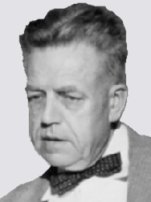|
性行為的基本類型
|
|
3.
同性性交
|
|
性體驗象譜
|
|
 |
|
阿爾弗雷德
C.
金西
(Alfred
C. Kinsey,1894-1956)不接受把人分成兩個獨特的人群-“同性戀者”和“異性戀者”的劃分。
|
|
Alfred C. Kinsey
(1894-1956) did not accept the division of people into two distinct groups - “homosexual” and “heterosexual”.
|
|
|
金西從他的研究成果中得出了符合邏輯的推斷。以他自己的話說: |
“男性並不意指兩個分割的人群——異性戀者和同性戀者。世間本無好壞(sheep
and goats)[1]之分。並不是所有的事物要麼是黑要麼是白……。大自然罕有涉及孤立的事物分類。只有人類的頭腦才會創造這種分類,並試圖把實情強行塞進鴿籠裏(以遮掩真相)。活生生的世界中的萬事萬物都是一個連續的統一體。就人類的性行為來看,我們越快認識到這一點,就會越快逼近理解性的真諦……。如果人群不被分類為異性戀者或同性戀者,而是有一定程度的異性性體驗和同性性體驗的個體,就會激勵我們對這種性現象保持清醒的頭腦。”[2]
|
|
|
不過,眾所周知,在日常生活中,人們並未做出這種科學的區分,而是仍然談及到“男同(gay)”和“直人(straight)”[3],好像他們能夠被清晰地定義成分隔的人群似的。甚至,出於社會政治方面的原因,許多“男同”也喜歡以這種稱呼對待自己,不過,有一些“男同”想要在更寬泛得多的性取向象譜來認識自己。(整個這個議題是另一講的主題。讀者可以在我們網站的論“雙性戀”的論文裏得到一些初步的知識。)
[1].Sheep
and goats自《聖經》,原意可翻譯為“好人與惡人”。——譯者注。
[2].阿爾弗雷德
C.
金西等.人類男性的性行為,1948.639.【原版】
.
傳統的文獻譯作“異性戀者”。——譯者注。
|
|
Basic Types of Sexual Behavior |
|
3. Homosexual Intercourse |
|
A Continuum of Experience |
|
Kinsey also drew the logical conclusion from his discoveries. In his own words: |
|
"Males do not represent two discrete populations, heterosexual and homosexual. The world is not to be divided into sheep and goats. Not all things are black nor all things white. , . . Nature rarely deals with discrete categories. Only the human mind invents categories and tries to force facts into separated pigeon-holes. The living world is a continuum in each and every one of its aspects. The sooner we learn this concerning human sexual behavior the sooner we shall reach a sound understanding of the realities of sex….It would encourage clearer thinking on these matters if persons were not characterized as heterosexual or homosexual, but as individuals who have had certain amounts of heterosexual experience and certain amounts of homosexual experience."
|
|
|
Alfred C. Kinsey et al., Sexual Behavior in the Human Male (1948) p. 639.
However, as we all know, in everyday life people do not make these scientific distinctions, but continue to speak of “gays” and “straights” as if they were clearly definable separate groups. Indeed, for various sociopolitical reasons, many “gays” also prefer to see themselves this way, Others, however, want recognition for a much wider spectrum of sexual orientations. (This whole issue is the subject of another course. Some preliminary information can be found in the paper on “bisexuality” on our web site.)
|
|